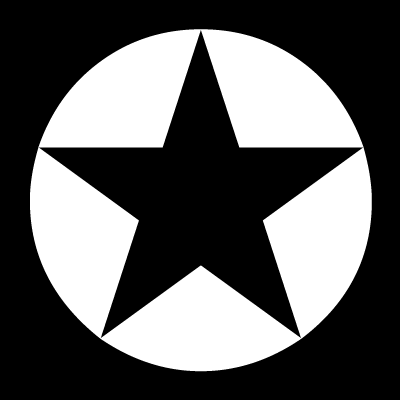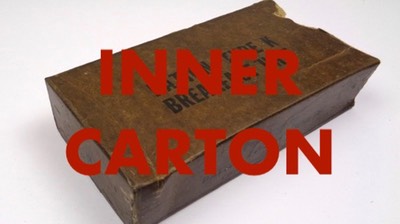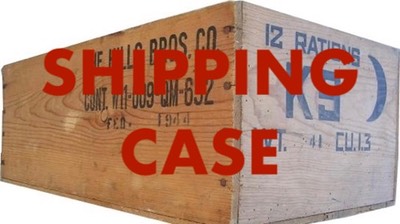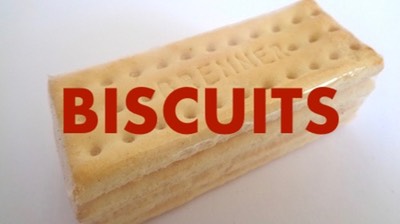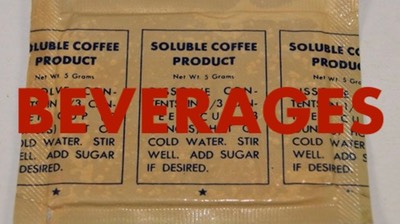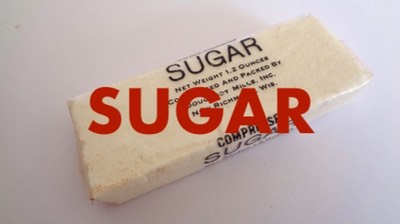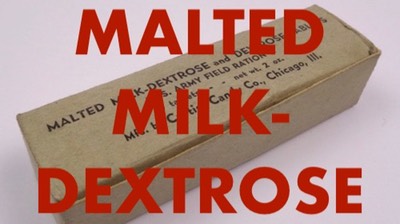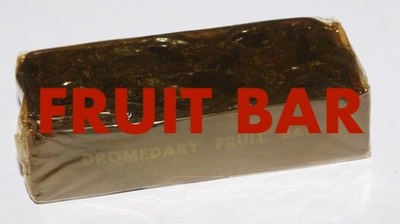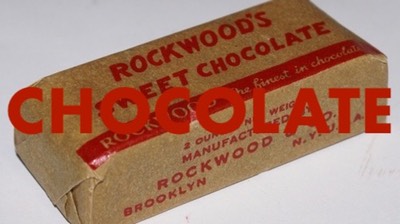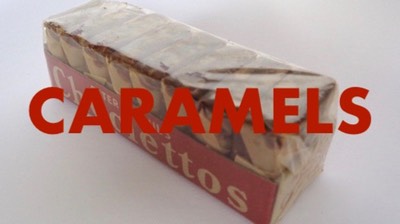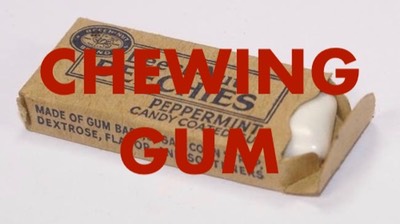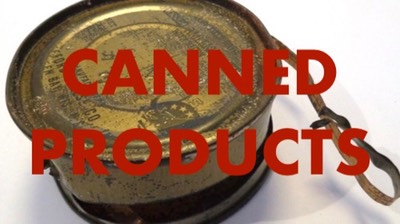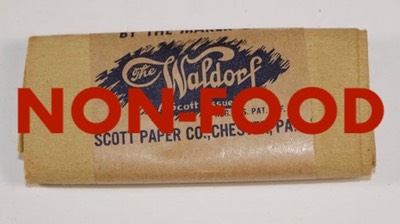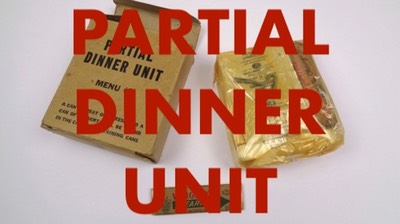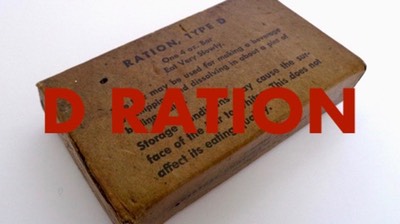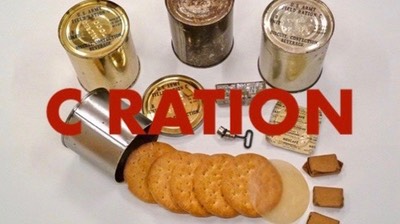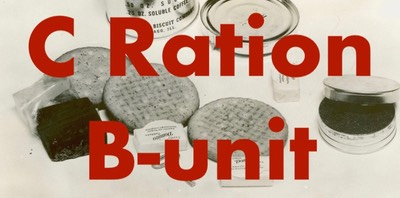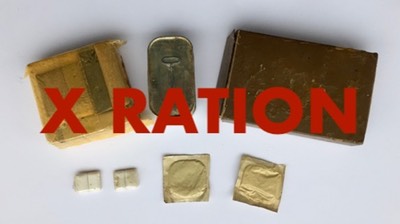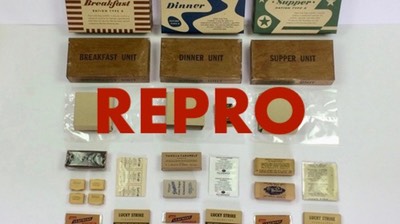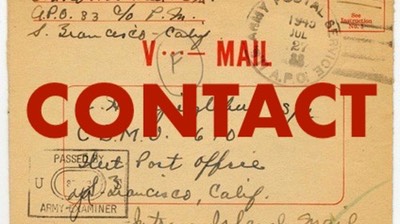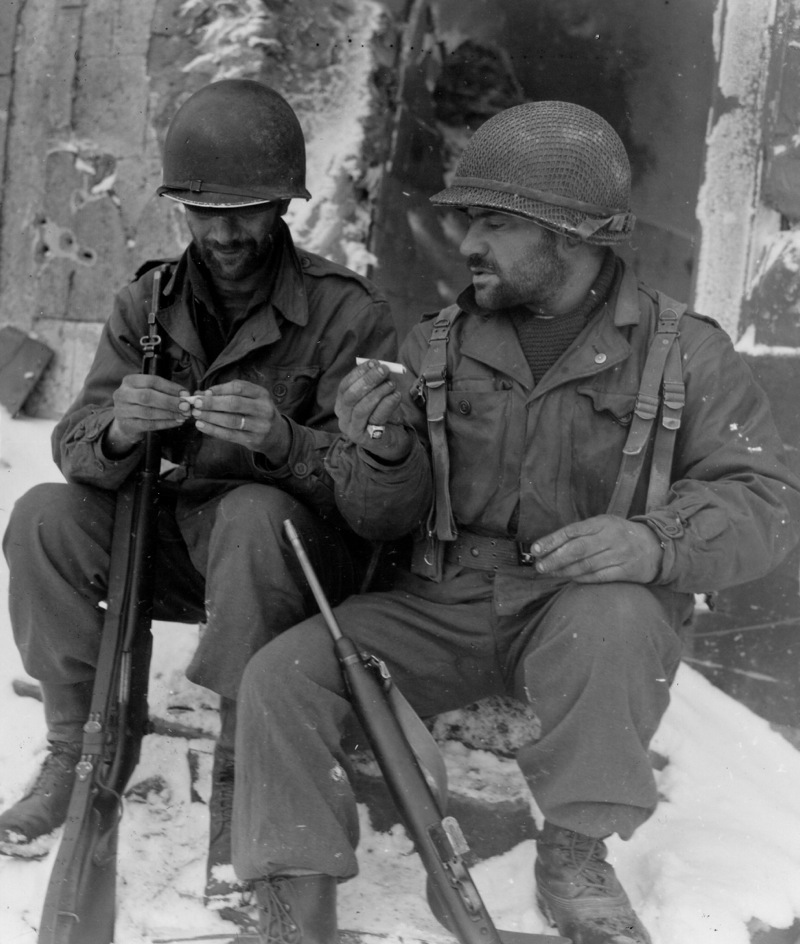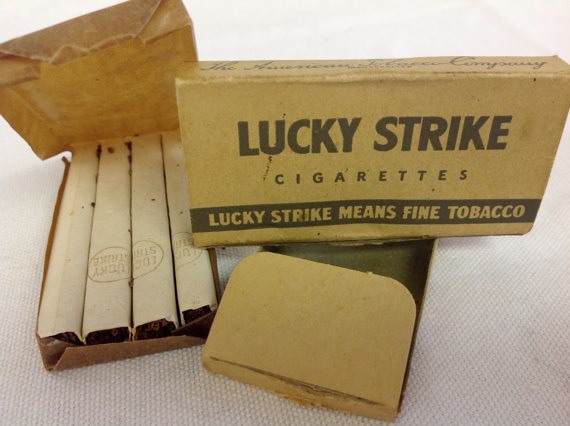An excellent feature of the "K" ration is the cigarette ration. Cigarettes were one of our hardest things to supply. With carrying priority, it's hard to convince yourself that cigarettes are in the same class as food and ammunition, but they are near it. That problem is solved in the "K" ration.
Cigarettes
Soon after the adoption of the K Ration suggestions came that there should be more included then just food. One of the first things included were cigarettes. Each unit held a small package of four cigarettes. This was done in August 1942.
Lucky Strike!Although the most famous brand of WW2, it was not that often included in the K Ration and only in the late war K Rations..
Tabaco companies were already using small promotional packages containing four cigarettes. Usually these packages have the text "Not for sale" or "Sample package" on it. Two-- or three-cigarette "sample" packages were also produced.
These four-cigarette "sample" packages would fit perfectly the K Ration. The packages were tucked next to the can in the inner box. Although the cigarettes were not to be packed with the food items in the cellophane bag, it was sometimes done erroneously by the packaging company.
Early war packaging of four Chelsea cigarettes. Note that one of the colors is printed with a metallic ink, this practice was often discontinued due to restrictions on the metallic dyes used. (photo: 1944Supply)
Early packagings were of the prewar designs with colorful printing, but soon the packagings were made of brown paper or cardboard with dull, less conspicuous, designs.
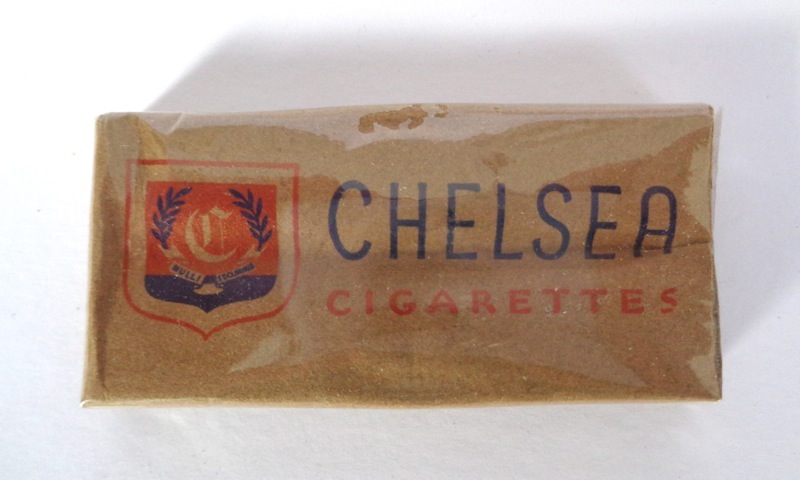
A Chelsea package in less conspiciuos colors. The cigarettes are packed in grease proof paper placed in a kraft paper wrapping, leaving one end open, and then overwrapped with cellophane.
Some packages were of a box with tuck-end design, or a tray fitted in a sleeve, or a paper wrapping in which the cigarettes were placed (so called soft-packs). It should be pointed out that all cigarette packagings were overwrapped with cellophane.
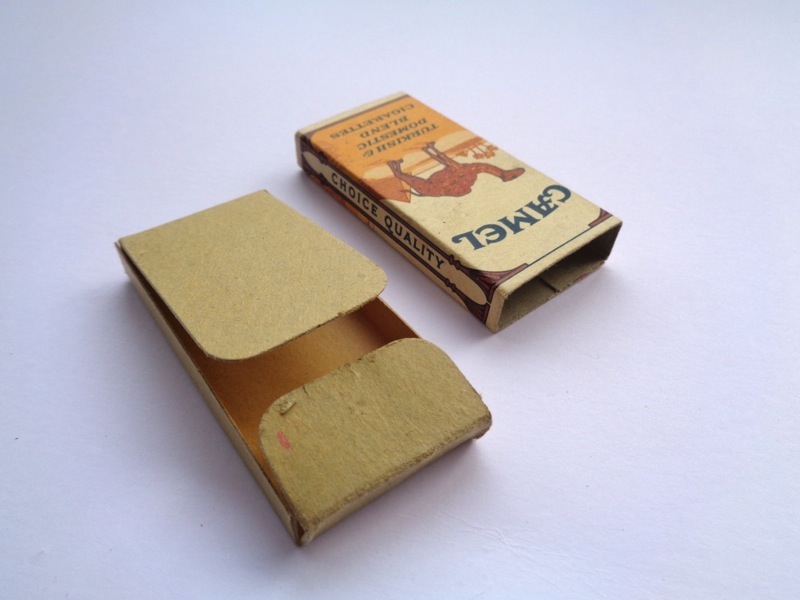
Four Camel cigarettes were placed in a cardboard tray that fitted in a sleeve printed with the regular colorful Camel design.
Although Lucky Strike is the most famous brand, one of the most included brand in the K Ration appears to be the Chesterfield.
Many other brands were also used in the K Ration. Such brands are: Philip Morris, Camel, Chelsea, Raleigh, Fleetwood and Old Gold.
Note: It is not unusual to have a different brand of cigarettes included in each of the K Ration units.
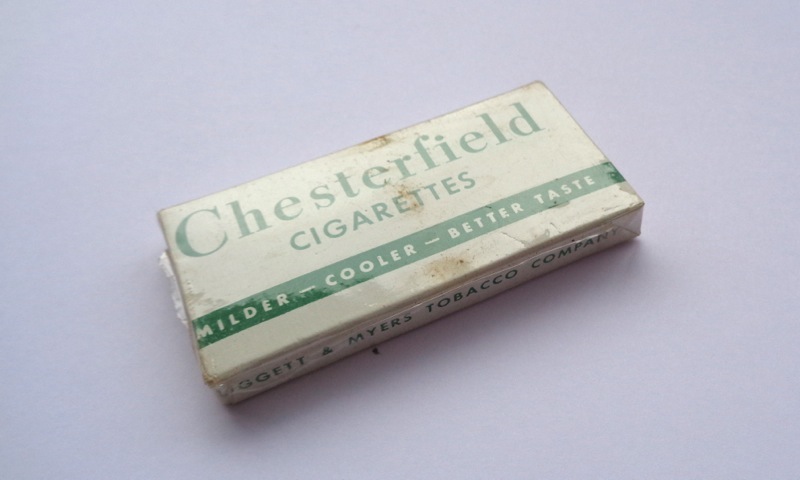
Chesterfield cigarettes were used with the K Ration from the beginning. Early packages were made of white cardboard with the design printed in green. The carton is of the sleeve type construction.
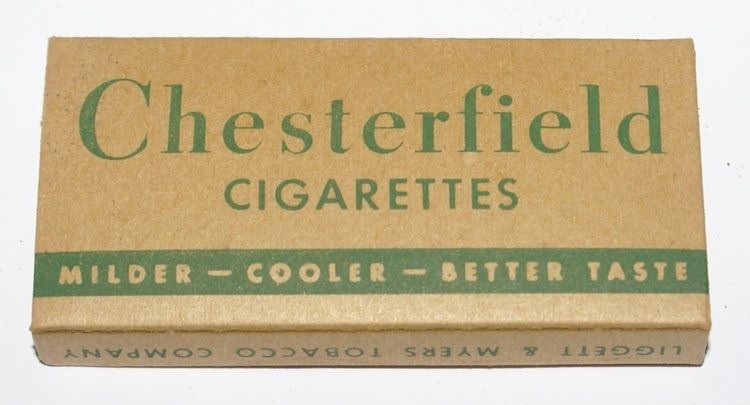
Soon the cardboard changed to kraft board. Note that the printing remained the same as the early cartons. (photo: 1944Supply)
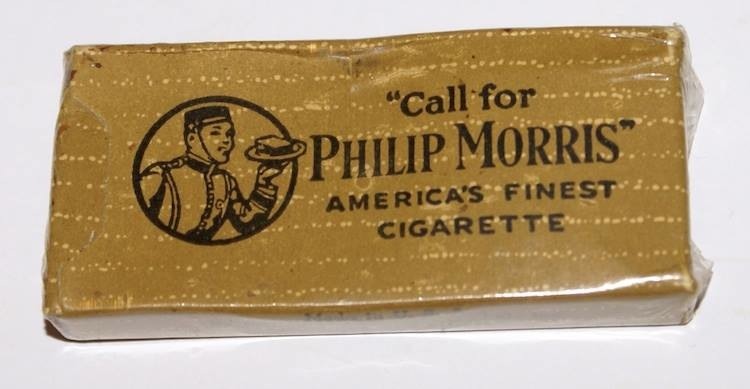
A tuck-end box with four cigarettes used by the Philip Morris Co.
During the war a simplefied two color design was used. The full color packages with four cigarettes are post war packages from the Individual Assault Ration or "sample" packages. (photo: 1944Supply)
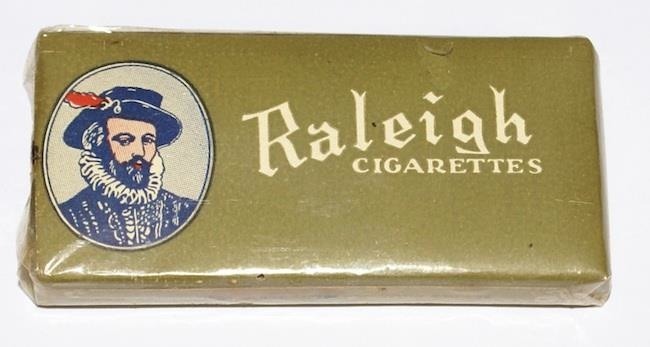
Raleigh used, like the Chelsea package, a grease proof paper wrapping placed inside a printed paper wrapping. (photo: 1944Supply)

Fleetwood appears to having used two different kind of tuck-end boxes. The left one has tuck in ends like the Old Gold box (below). The other one shown right has tuck in flaps at both ends, but the flap shown open has an extra crease at the back for easy opening.

An Old Gold package, having semi-circular flaps tucked into a slit at both ends.
A note on the numbers of cigarettes in a package as used with several army rations:
Two cigarettes packed together were included for a short while in an early USAAF Parachute Ration.
A package of three cigarettes were included in the B-units of the breakfast and dinner cans of the C Ration, this practice was done only for a few months. Later three packages with 3 cigarettes each, or one package with nine cigarettes were included in the accessory kit issued with one complete set of C Rations.
Four cigarettes are packed with the K Ration.
The short lived Mountain Ration, Jungle Ration and the 5-in-1 Rations all used small packages containing five cigarettes each.
The 10-in-1 Ration included packages with 10 cigarettes each.
Packages of 20 cigarettes each are the same as the regular civilian packs and were sold in US Army operated PX stores.
Matches
The suggestion of including matches was done at the same time as the inclusion of the cigarettes. While a suitable package for the cigarettes was already on hand –the "sample” packages–, standard commercial matchbooks with 20 matches were too bulky to fit easily in the K Ration.
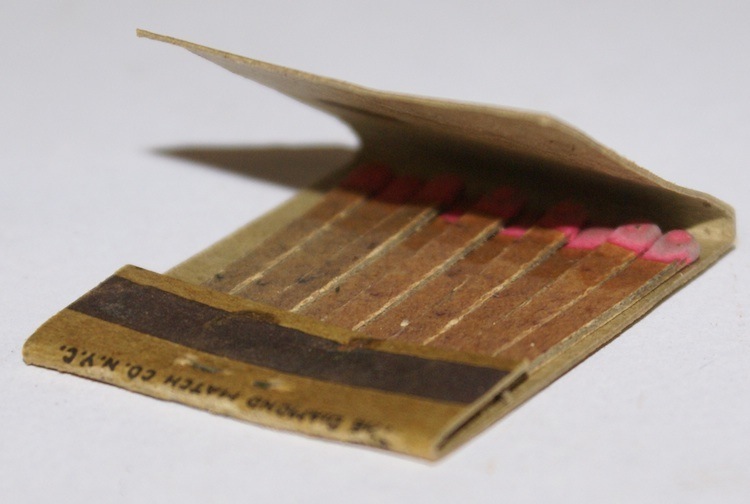
With one row of 10 matches the matchbook was sufficiently flat to be placed on one end of the can placed inside the inner K Ration box. (photo: 1944Supply)
After careful concideration it was determined that a matchbook with one row of ten matches was suitable. Although it was originally recommended that one such a clip was included in all three units, it was decided that only the Dinner unit would contain a matchbook.
A clip with just one row of matches was sufficiently flat that, when placed on top of the canned product, it would not cause the inner carton to bulge too much.
The new matchbooks were included in the K Ration's Dinner unit in Februari 1943. The specifications, however, were issued later in May. It is possible to find the matchbook in the Supper unit of the K Rations procured during this period prior to the issue of the specifications.
In September of 1945 the matches were moved to the Supper unit.
Note: only the matchbooks having one row of 10 matches were used with the K Ration. Matchbooks containing two rows of 10 matches were used with the 10-in-1 Rations, and a small matchbook having two rows of 5 matches was included in the accessory kit of the C Rations. Most WW2 matchbooks with 20 matches are promotional clips with, for example, an advertisment for buying war bonds, or other kinds of patriotic designs. These matchbooks were not used in the rations.

A wide variety of matchbook covers was used with the K Ration.
There are five known distinctive varieties of the the matchbook covers used in the K Rations.
The simplest matchbook cover was printed overall on the outside with a drab khaki/green color with only the instruction to close the cover before striking the match, and the name of the manufacturer both printed in small typeface.
Another version had the addition of the word "MATCHES" printed in bold letters on the front of the cover.
A third variety is of the same simple design, but carried the text "Wherever you are, Good Luck from Dromedary" Remember that Dromedary Fruit Bar? Dromedary was a brand of The Hill Brothers Co. who was a prime contractor for the K Ration. Obviously the K Rations that are packed by the Hills Brothers Co. contained these matchbooks.
Appearantly it was allowed by the army for companies to sponsor the war efford by supplying matchbooks with their slogans and advertisements. One such a matchbook (shown below, front and back) supplied by the American Safety Razor Co. advertising Gem Blades was found in a late 1943 Dinner unit (Type IIIa), with the printing on the outside of the cover, using dull colored inks.
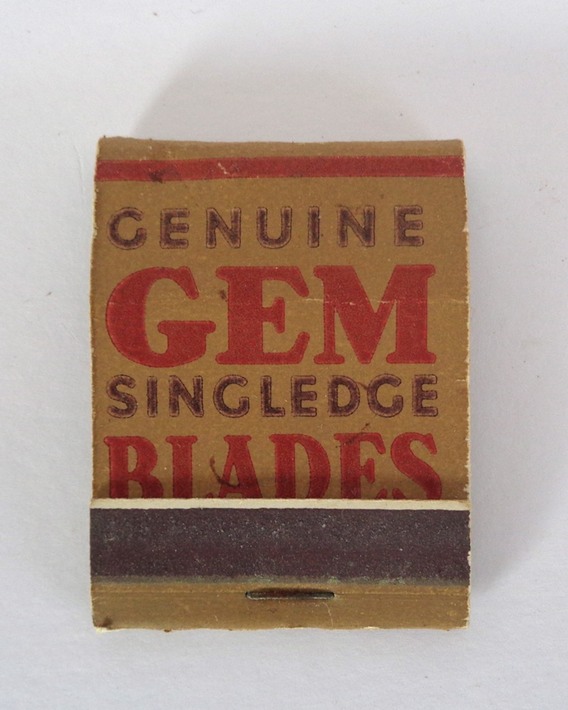
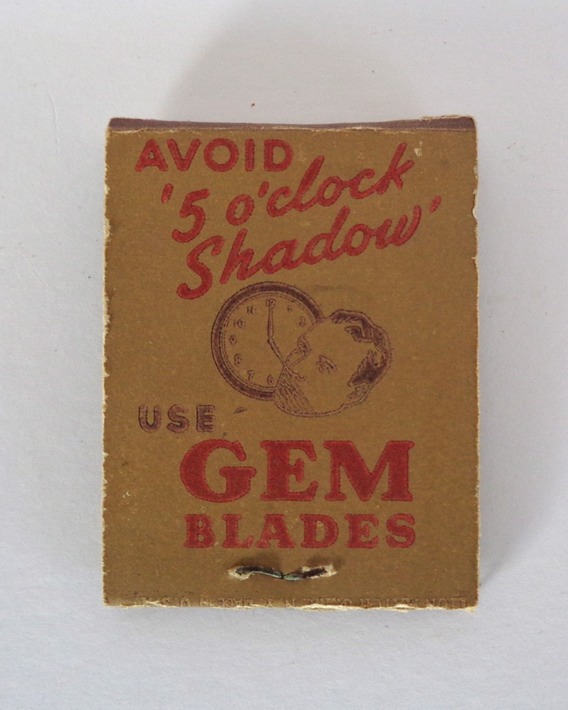
It was found feasable not only to print the malaria warning on the K Ration's outer carton, but to use the matchbook cover for these instructions as well. Although the text is always the same, the design may vary. Remember that these specifications for the malaria warning were issued in the fall of 1943.
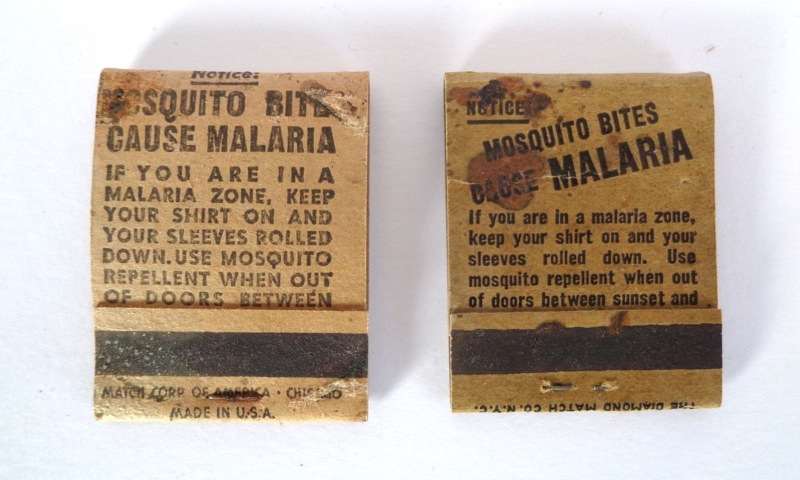
Two matchbooks from Dinner units showing different layouts with the malaria warning. Both having the text in black ink on plain cardboard.
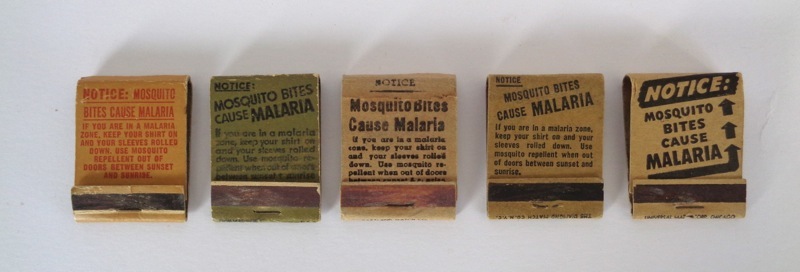
These five matchbooks are from 10-in-1 Rations and are included here to show the wide variety in designs. Note that the second and fourth clip have the same layout. The second one is printed overall green with black lettering, while the fourth is printed on plain cardboard (this one has an advertisement for razor blades printed on the inside.)
Again, some of the matchbooks were supplied or sponsored by commercial companies. The malaria warning was mandatory, so now the advertisement was printed on the inside of the cover, usually just in black ink.
Advertisement for Cough Drops on the inside of a matchbook cover that carries a warning against malaria on the outside front panel.
Although the Malaria warning is standard on the matchbooks, some packers still used the blank ones that were still in stock sometimes.
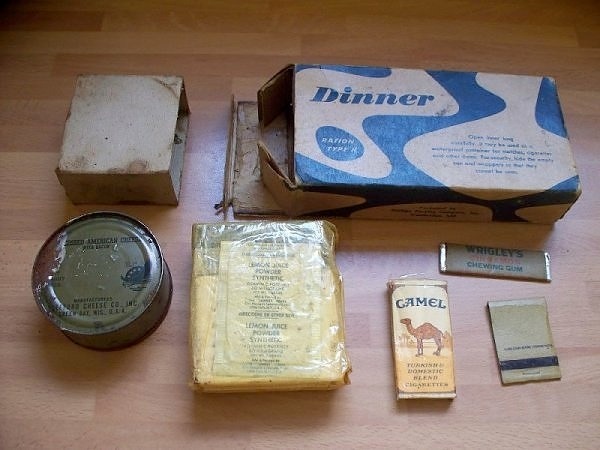
Here's a early 1945 Dinner unit with the blank matchbook. (photo: 1944Supply)
There is speculation of other warnings on the matchbook covers, like a warning against venereal disease (VD), but so far I have found no conclusive evidence that these were included in the K Rations (or other rations).
Usually the heads of the matchsticks are red, but other colors, like green and blue, can be found as well.
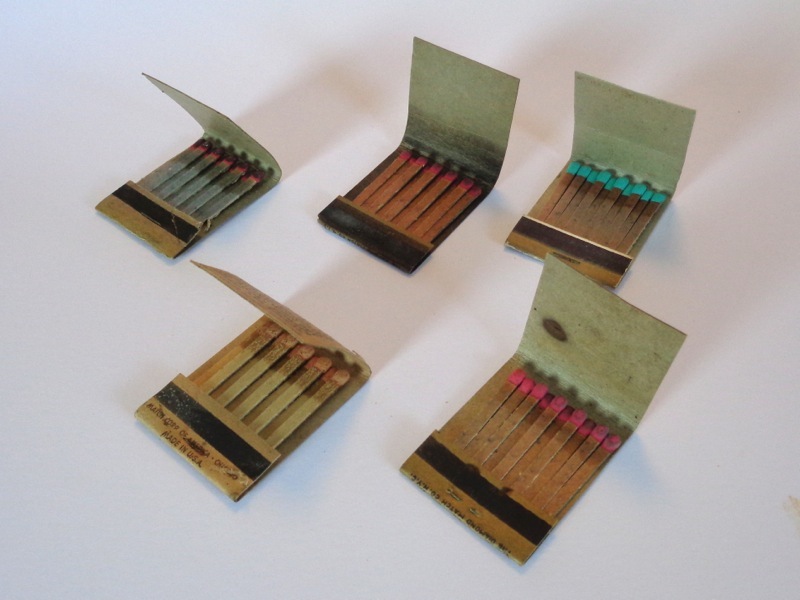
Matchbooks from K Rations have usually red tips, but the commercial Gem Blades matches have green tips.
